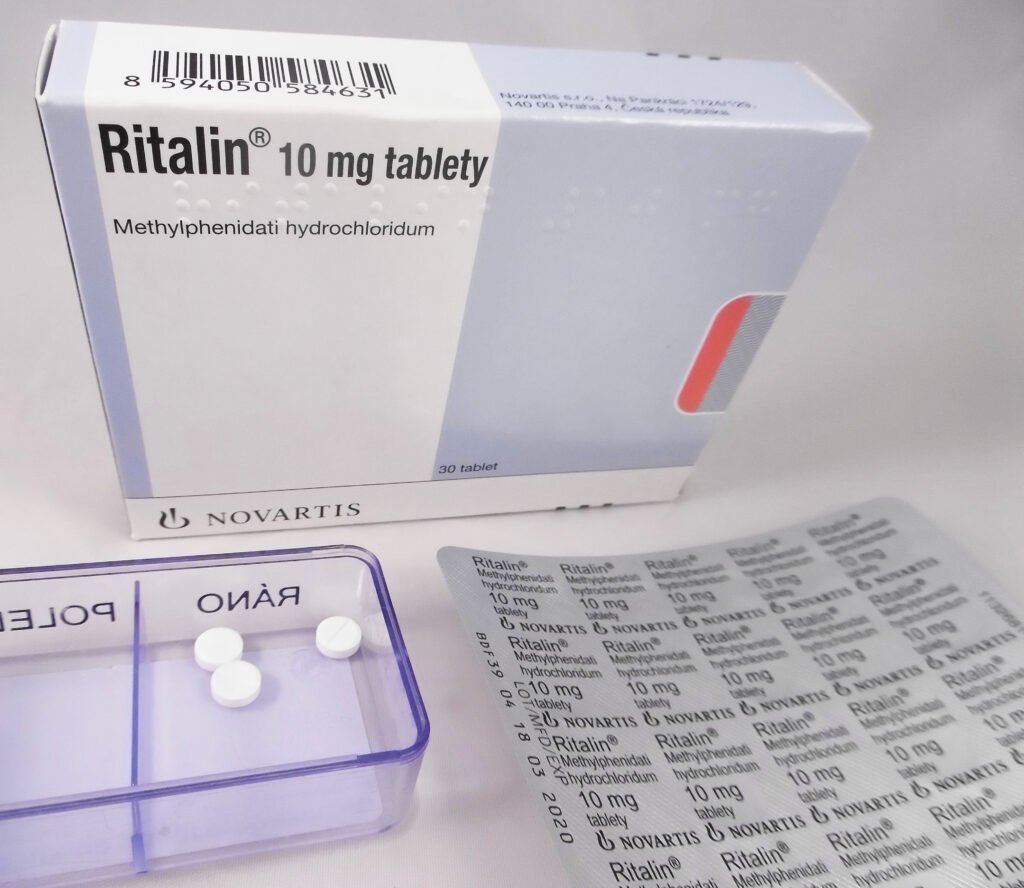Introduction
Buy Tramadol Online offers a promising solution for individuals grappling with the debilitating and persistent issue of back pain. This medication operates through a dual mechanism of action, combining opioid receptor agonism with norepinephrine reuptake inhibition. By doing so, it not only provides effective pain relief but also addresses the emotional component of pain perception.
Dosing guidelines for Tramadol vary based on the severity of pain and individual tolerance, typically starting at 50 mg every 4-6 hours. Its distinct mechanism helps minimize the risk of opioid-related side effects like constipation and respiratory depression, making it a safer choice for long-term use in chronic pain management.
The potential benefits of Tramadol for back pain include significant pain reduction and improved quality of life, especially for those who have not responded well to other pain medications. However, it is essential to exercise caution, as it can still lead to dependence and addiction. Therefore, a healthcare professional’s guidance is crucial when considering Tramadol as a treatment for back pain.
Understanding Back Pain
Back pain is a complex and multifaceted condition with a wide array of potential causes. It can be triggered by factors such as muscle strains, ligament sprains, herniated discs, degenerative conditions like osteoarthritis, spinal stenosis, or even underlying medical issues. This diversity in etiology leads to a broad spectrum of pain experiences, ranging from mild, intermittent discomfort to excruciating, chronic agony.
Muscle strains often result from overexertion or improper lifting techniques, while herniated discs occur when the soft inner material of a spinal disc leaks out and irritates nearby nerves. Osteoarthritis, a degenerative joint disease, can lead to inflammation and pain in the spine’s facet joints. Moreover, underlying health problems like kidney stones or infections can also manifest as back pain.
What is Tramadol?
Tramadol, classified as an opioid medicine, is available exclusively through a prescription from a qualified medical professional. Its potency and potential for misuse necessitate careful oversight. To further explore Tramadol’s nuances, you can refer to a list of medicines containing Tramadol, aiding in better comprehension.
What is Tramadol Used For?
Buy Tramadol Online undeniably stands as a formidable ally in the relentless battle against acute, severe pain. Its opioid properties, combined with its unique mechanism of action, make it an asset in the realm of pain management. However, the judicious use of Tramadol is essential. It should be reserved for situations where non-opioid pain relief methods have proven either ineffective or intolerable to the patient.
It is crucial to emphasize that Tramadol is not the optimal choice for managing chronic pain. Prolonged usage can lead to tolerance, dependence, and an increased risk of adverse effects. Healthcare providers typically prefer alternative treatments and non-opioid analgesics for chronic pain conditions to minimize these risks.
How Does Tramadol Work?
Tramadol’s mechanism of action is intricately tied to its direct interaction with opioid receptors in the central nervous system. Acting as a mu-opioid receptor agonist, Tramadol intervenes in the signaling of pain between the brain and the body, which plays a pivotal role in its effectiveness as an analgesic.
When pain signals are transmitted, they typically bind to opioid receptors in the brain and spinal cord. Tramadol binds to these receptors, reducing the perception of pain and altering the way pain messages are interpreted. Moreover, Tramadol also inhibits the reuptake of neurotransmitters like serotonin and norepinephrine, enhancing its pain-relieving effects and contributing to a broader spectrum of pain management.
Exploring Possible Side Effects
Buy Tramadol Online, while a valuable tool in pain management, is not without its share of potential side effects. It’s crucial to be aware of these risks, especially when considering its usage. Here, we delve into the possible side effects of Tramadol, highlighting key factors that can increase the chances of experiencing adverse reactions.
1. Respiratory Issues:
One of the most significant concerns associated with Tramadol use is the risk of life-threatening respiratory problems. This risk is heightened during the initial consumption of the medication, following dosage increases, among older individuals, and those with pre-existing lung conditions. It underscores the importance of cautious prescribing and vigilant monitoring by healthcare providers.
2. Common Side Effects:
Buy Tramadol Online can lead to a range of common side effects that, while not life-threatening, can be bothersome. These include constipation, headaches, dizziness, fatigue, and drowsiness, especially shortly after ingestion. These effects can impact a patient’s daily life and should be reported to healthcare providers for appropriate management.
3. Gastrointestinal Distress:
Nausea, vomiting, and loss of appetite are also potential side effects of Tramadol. These symptoms can be distressing but are often manageable with proper guidance and adjustments to the treatment plan.
4. Sweating and Muscle Weakness:
Excessive sweating and muscle weakness are less common side effects but can occur with Tramadol use. These should be communicated to healthcare providers, as they may warrant further evaluation.
Understanding the Risks
Opioids, including Tramadol, wield considerable potency in pain relief, but not without substantial risks. buy Tramadol Online may impair your ability to operate heavy machinery or drive due to its propensity for inducing drowsiness. Individuals with impaired kidney or liver function may find Tramadol unsuitable, alongside various other factors like alcohol consumption and concomitant use of sedative medications. Your doctor, as the foremost expert in your healthcare, will guide you in determining the appropriateness, dosage, and duration of Tramadol usage. Tolerance and dependence are potential outcomes of Tramadol use, necessitating vigilant monitoring by your healthcare provider to mitigate misuse, abuse, and addiction risks.
Managing Opioid Dependence
Regular and sustained use of Tramadol carries the risk of dependence, even when adhering meticulously to prescribed guidelines and for a short duration. Tolerance may also develop, necessitating increased dosages that consequently elevate the risk of side effects. Discontinuation of Tramadol without proper guidance can result in withdrawal symptoms.
Exploring Alternatives to Tramadol
Pain is a highly individualized experience, and what works for one may not work for another. Non-opioid pain relief options, often associated with fewer risks and side effects, should be considered. It is advisable to consult your healthcare provider or pharmacist before making any changes to your pain relief regimen. In cases of chronic pain, lifestyle modifications such as improving physical fitness, pacing activities, engaging in social interactions, practicing relaxation techniques, and overall health management may prove effective. For more information on managing chronic pain, delve into the options available.
When to Seek Medical Guidance
Should your pain remain inadequately controlled with Tramadol or if you encounter unexpected side effects, prompt consultation with your healthcare provider is imperative. Preparation for such appointments can be facilitated using the Pain Question Planner, streamlining the discussion of your concerns and treatment options.
Safely Disposing of Medicines
Proper disposal of unused opioid medications is vital to prevent misuse and harm. Unwanted medications can be returned to any pharmacy. It is crucial to refrain from keeping unused Tramadol “just in case,” as this practice can lead to dangerous and inappropriate usage. To ensure the safety of children and pets, store Tramadol out of their reach. Avoid disposing of medications in the garbage or flushing them down the toilet, as these actions pose risks to others and the environment.
Resources and Support
For individuals seeking more information and support related to their treatment or medication, resources are readily available. Questions to ask your pharmacist or doctor before taking a medicine can be found in a guide, and you can access the consumer medicines information (CMI) leaflet for the prescribed brand. Additionally, helplines and pain services, such as the Pain Link helpline staffed by volunteers with personal experience of chronic pain, can provide valuable assistance. Explore Pain Australia to discover pain services and programs in your locality. To enhance your understanding of prescription opioids, refer to Choosing Wisely for further insights.
How to treat Anxiety
Treating anxiety involves a multi-faceted approach that combines lifestyle changes, self-help techniques, and professional interventions to manage and alleviate symptoms. Here are some key strategies:
1. Psychotherapy:
Cognitive-behavioral therapy (CBT) is widely regarded as one of the most effective treatments for anxiety. It helps individuals identify and challenge irrational thoughts and behaviors that contribute to anxiety. Through CBT, individuals learn coping strategies to manage anxiety and regain control over their lives.
2. Medication:
In some cases, medication may be prescribed by a healthcare provider to help manage anxiety symptoms. Antidepressants, benzodiazepines, and beta-blockers are commonly used medications, each with their own benefits and potential side effects.
3. Lifestyle Changes:
Adopting a healthy lifestyle can significantly impact anxiety levels. Regular exercise, a balanced diet, and adequate sleep promote overall well-being and resilience against anxiety.
4. Relaxation Techniques:
Deep breathing exercises, progressive muscle relaxation, and mindfulness meditation can calm the mind and reduce anxiety symptoms. Regular practice of these techniques can enhance emotional resilience.
Treatment of ADHD
ADHD is a neurodevelopmental condition characterized by enduring tendencies of inattentiveness, hyperactivity, and impulsiveness, which can have substantial effects on a person’s everyday functioning. Managing ADHD effectively often involves a multimodal treatment approach tailored to the unique needs of each patient. Here, we explore the key components of treating ADHD, emphasizing the importance of individualized care.
1. Medication Therapy:
- Stimulant Medications:
Stimulants like methylphenidate Buy Ritalin Online and amphetamine Buy Adderall Online are among the most prescribed medications for ADHD. They work by increasing the availability of certain neurotransmitters in the brain, improving focus and attention.
- Non-Stimulant Medications:
For individuals who do not respond well to stimulants or experience undesirable side effects, non-stimulant medications like atomoxetine (Strattera) and guanfacine (Intuniv) may be recommended.
Conclusion
Buy Tramadol Online emerges as a potent tool for alleviating acute, severe pain. Its dual mechanism of action, combining opioid receptor agonism with norepinephrine reuptake inhibition, offers a unique approach to pain relief. However, it’s essential to recognize its limitations and associated risks.
Tramadol may provide significant pain reduction and an improved quality of life, particularly for those who have not responded well to other pain medications. Yet, it is not a one-size-fits-all solution, and its usage should be approached with caution.
Understanding the potential side effects, risks of dependence, and the need for careful monitoring by healthcare providers is paramount. Patients and healthcare professionals should engage in open and informed discussions to ensure the most appropriate and safe use of Tramadol.
Moreover, exploring non-opioid pain relief options, adopting lifestyle modifications, and considering alternative treatments are essential components of a holistic approach to pain management. Consulting healthcare providers and pharmacists is essential when considering changes to pain relief regimens.
Ultimately, the goal is to strike a balance between effective pain relief and minimizing the potential for adverse effects and dependence. By doing so, individuals can navigate their pain management journey with greater confidence and overall well-being.











